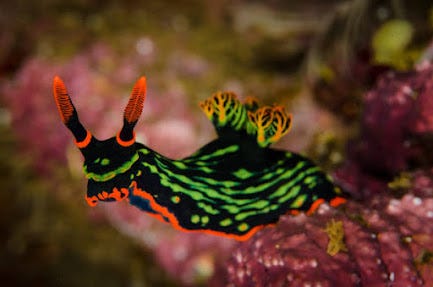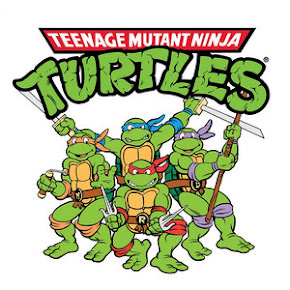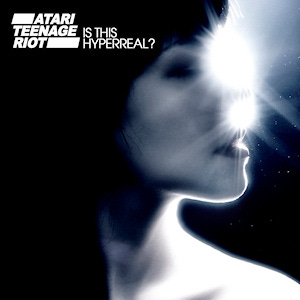Hyperreal: the Mallcrawl
Whereinheretofore I discuss cool stuff about my upcoming Mothership module.
It's been quite some time since I made any kind of update about my projects. Last mention was 9 months ago, where I teased Hyperreal: the Mallcrawl on Twitter:
https://twitter.com/JetMcFin/status/1649562614471487488
Life has been very busy; I got married, started a new job, moved to another state, etc. Somewhere between all of that, I wrote and published The Oceans Are Endless on Meridian together with my friend and writing partner, Mystery Spice.
Things are settling down in such a way that I can now re-devote more time to game development and writing. So, what’s cookin'?
Hyperreal: the Mallcrawl
Hyperreal is a shameless, 90s nostalgia-bait depthcrawl through an infinite mall. I started writing it about 3 years ago, but it was moved to the way back burner in favor of Meridian. It is now my primary project and the one I’ll be releasing next.
I have affectionately dubbed it a "mallcrawl." This month, I'll pick apart the above descriptors piece-by-piece in reverse order. Next month I'll dive into specific mechanics and systems.
“...through an infinite mall.”
About 2 years ago, when we were living in Northern New York, my wife and I made a quick drive up to Toronto. Beneath the city is a 19-mile-long mall. Yes, you read that properly. 19 fucking miles, stretching under Toronto. It's called the PATH. It's huge, and it's a fucking maze to an outsider like myself. There are maps everywhere, but perhaps because my head was spinning at the size of the place, I found them very difficult to read. Also, they certainly aren't accurate. Also, it's not laid out linearly like a normal mall with 3-4 intersecting concourses capped by anchor stores. There is no main concourse, no predominate path that acts as the orienting spine of the space. There are only short, straight halls that dead-end abruptly or tiny, twisting halls not detailed on maps that loop back around to the short, straight halls.
It's also deeper than the maps portray. We went 2 floors down the main staircase and another 2 floors down a narrow side-staircase at one point (again, not on any map) before the stairs led to a small, locked metal door with yet another set of stairs behind it. Some stairs led up to the lobby of (closed) banks, bars, or other shopping centers. There were multiple floors not even noted on the map. If a Toronto native happens to read this and can tell me what the hell is going on with the maps versus reality down there, please tell me.
On top of that, we went on a day when apparently every shop in the mall was closed, but the space itself was still opened, so it seemed eerily abandoned. On more than one occasion we would emerge from an unmapped staircase, only to find ourselves in the center of some closed store, bank, or out on the street - the door locking behind us.
All of that to say: huge, interior, liminal-like spaces in which you can easily become lost (mentally lost and physically lost) have always been excruciatingly fascinating to me. This is only the most recent example - I left out my childhood explorations because I worry that this update will ramble for too long.
So yeah, this game is set in a place like that.
“...depthcrawl...”
I won't get into the weeds about who first thought of what, but I was exposed to the depthcrawl via Emmy “Cavegirl” Allen in her wonderfully bizarre Gardens of Ynn and Stygian Library OSR modules.
In essence, dice rolls create rooms, encounters, and details on the fly. The deeper you go, the more rooms become available on the roll-table, but the risks also increase. Why generate things in this way? Emmy explains it best in the introduction to the Stygian Library:
“…by rolling up locations as you go, the GM gets the same sense of discovery that the players do. Both the players and the GM discover the library’s layout and contents at the same pace.”
My hope is that the Warden will have as much fun exploring as the players do.
It's also an abstraction of travel. The act of dice rolling isn't telling players where they “go” next, but rather it's drawing attention to the next Interesting Thing that happens. To once again quote Emmy from the Gardens of Ynn:
“Between locations, the gardens are relatively boring. Hedges, lawns, flowerbeds or whatever. Nothing interesting; if it was interesting, it would be a location.”
I've quoted Emmy twice here because Hyperreal is principally designed as an Emmy-inspired depthcrawl for Mothership, and who best to speak for the intent behind her design than the designer herself? But of course, Hyperreal needs to be more than just a re-skinned Stygian Library. To that end, Hyperreal has some slight alterations. There are many, but here are 3:
Layout: the book is the roll table. I don't like rolling on a table on one page and flipping to a different page number. It slows down gameplay. Instead, imagine the book itself as a d100 roll table. Each page number should directly correspond to a d100 (or 2d10). If you roll a 78, you should turn to page 78 and what you need to get players involved should all be right there on the page for you. This will take a little layout kung-fu to pull off, and I might fail spectacularly, but I'm certainly going to try this experiment. Each page should include things like encounters, loot tables, NPC disposition and intent, NPC stats, location variations, etc.
Depth changes how reality is presented (or perceived). All 100 locations are available right away, instead of the usual depthcrawl of more locations becoming available as you delve deeper. Instead, the deeper you go, the more Depth Modifiers become a available on the roll table. There are about 15 Depth Modifiers (still debating if I want to expand that to 20). Whenever you “go deeper” you roll a d10 to determine what modifier is present at that depth. These modifiers are how realty is altered. As an example of reality being altered: depth modifier 05 is called “Wonderland!” where your Stress become Wonder. The world around you becomes mischievous and playful. Anything that is normally stressful or terrifying instead becomes whimsical. How can the many-tentacled Man o' Worm be stressful when it transforms into origami stop-motion animation and spits confetti all over you? Shooting someone isn't nearly as traumatic when your rifle becomes a colorful nerf gun that makes silly pew-pew sounds and flowers sprout from gunshot wounds. Think Meet the Pyro and you'll get the idea of where I'm going with this. The object is to expose yourself to as much Wonder as possible to force rolls on the Ecstasy table, which has numerous benefits and buffs, similar to how too much Stress forces a roll on the Panic table which is filled with horrible things and debuffs. The crux is that Wonderland is also unstable and reality can come crashing back down at any moment, instantly converting all Wonder to Stress, which prompts a Panic check.
Minigames change the outcome or alter the odds. Some of these minigames require player-attention more than they require dice rolls. For example: sea slug collecting and breeding (formerly beetle breeding). PCs can breed sea slugs, and then distill their offspring's chemical secretions into potent cocktails that can be released into the air supply, packed into chemical grenades, or distilled into liquids to put into a Super Soaker 50. There are 3 kinds of basic sea slugs which can be bred for a total of 21 different sea slugs. It's up to the players themselves to observe the coloring and markings of the slug to make inferences about what the chemical excretions do. This will require experimentation, but after direct observation, the results can be extrapolated and applied to other slug pairings. For instance, players might know that a green slug will affect a the Intellect Stat (still WIP), while a red stripe means that it will affect Intellect in a way that is dangerous to everyone (Rage). Knowing this, players can breed by color pairing (red slug + blue slug = purple slug) and temperament (aggressiveness is a dominant trait) to get a slug with dangerous chemical secretions. They might not know exactly what Stat purple affects, but if a green slug with a red stripe made them rage-out and attack at random, then a purple slug with a red stripe probably isn't going to be fun, so they know to test it on someone else far away from them instead of directly on themselves.
“...shameless, 90s nostalgia-bait...”
I think the 90s were pretty cool. I loved pogs, baseball cards in my spokes, Super Soaker fights, Saturday morning cartoons, and Hanna-Barbera mascots at King's Island. One Must Fall 2097 was the shit, nobody was ever winning Legends of the Hidden Temple, and I wore my Ninja Turtle jumpsuit whenever I wasn't wearing MC Hammer parachute pants. I got my leg stuck in a hole, I sharpened sticks on concrete to make bows and arrows, I learned to drop-in at the halfpipe behind our house, the abandoned laundromat in the woods there was haunted as shit, and I broke my arm falling off a dangerously high playground platform but lied to my mom for like an hour and tried to hide my broken arm because I was scared of doctors.
But the thing about the 90s is that I only remember it as a kid/teen, because I was a kid/teen. It was awesome. For me.
Reading about the 90s as an adult and taking off the nostalgia glasses, the 90s fucking sucked for a lot of people. There was economic depravity even as we today tout it as a time of economic prosperity (prosperous for whom?). There was the Bosnian War, the Kosovo War, Rwandan Genocide, massive unemployment in the US...and that's all I can remember off the top of my head. Your personal circumstances aside, there's not much of a general reason to like the 90s any better than the modern decade. But that’s the thing about nostalgia, right? It distorts reality into something better than it really was. Nobody and nothing was better "back then."
All the same, I want to immerse people in what was fun and lovable about the 90s for me. I want them to relive their own fun experiences and, if not that, be in a world that is impossible except in the hazy memories of childhood memories. Because at the end of the day, that's all nostalgia really is, right? Just a memory of a memory - the idea of something that happened, and you don't really remember directly what happened, you just remember the memory of it. Or something like that. I think I'm talking out my ass right now.
The point is, all this talk about nostalgia versus reality is where we get to the last and most important part...
“Hyperreal...”
I told you all that so I could tell you this. The term “hyperreal” comes from the French philosopher Jean Baudrillard. In brief, it is when the symbols that encode reality become so heavily relied upon that reality becomes indistinguishable from the symbols themselves. That is, the simulation of reality becomes reality. For reference: throughout the rest of this post, by “reality” I mean both experiential reality and agreement reality.
As a real-life example of hyperreality, imagine social media in its earliest incarnation: SixDegrees, Friendster, and MySpace. If you happen to remember these sites, you'll recall that they were silly and fun, but mostly a novelty. Some people used them, some people didn't, and it really didn't matter very much which camp you were in. While MySpace eventually grew in popularity, nobody would have really considered it part of the social experience except people who were way too into it (by standards back then). It was a simulation of socialization, but socialization itself didn't depend upon it. This manner of simulation is the lowest and initial form of the simulacrum in Baudrillard's book, Simulacra and Simulation.

Imagine social media now. Twitter correctly assess itself as a news source, Twitter influences how we vote, Facebook instigates genocide. These are just the low-hanging fruits, never mind astroturfing on Reddit and Discord, aggressive job recruiters on LinkedIn, etc.
In other words, social media is now inextricably tied to the social experience. If you are not social media savvy, you will necessarily miss out on modern socialization. Full stop. That doesn't mean you have to have ever used TikTok, have a Facebook account, or be a Reddit power user. But even by reading this newsletter, it demonstrates that social media controls how you experience reality. This one is linked to a handful more, just like the old Webrings of Geocities. You probably got here from Discord, Kickstarter, suggestion algorithm of this site, or browsing Substack. All of this is firmly rooted in and originated by social media.
In other, other words, the simulation of socialization has become socialization. That is hyperreal. I reserve no judgement on whether this is a good or bad thing. To me, it simply is. The world has changed, and this is how it changed. I'm happy to see where it goes from here.
The idea of hyperreality is soaked in semiotics and linguistics, and I'm a semiotician and linguist to my very core. Symbols typically point to some underlying reality that needs to be described. But in hypereality this “pointing to” is usurped. A symbol that should point to the underlying reality instead points back to itself, thereby making reality impenetrable and unknowable to the observer.
Understanding how we encode and subsequently interact with reality is both fascinating to me and of the upmost importance.
Hyperreal is an exploration of this concept. It is also an exploration of nostalgia, which itself is a supplantation of reality. For some of us, we think fondly of the 90s. For others, it might be another decade. For others still, it might be a decade in which they never lived but still find comfort by imagining life there.
This is that.
Enter the Semiosphere
Like nostalgia and reality, Hyperreal (I'm talking about my module now, not the Baudrillardian concept) has an underlayer to it. Just as there is the raw truth beneath nostalgia and the symbols that compose reality, Hyperreal consists of both what the players can perceive on the surface, and a hidden dimension of living symbols. In Hyperreal, this dimension is called the Semiosphere. It is an ocean-like dimension overlying our own that can only be percieved by huffing the fumes of certain sea slugs or donning a circuit-bent Virtual Boy headset.
In Hyperreal, the players (like ourselves in real life) are prey to the symbols that encode reality. In the module, players are literally hunted by titanic apex predators that exist only on the symbolic level, until those symbols come tearing out of the Semiosphere and into reality to shred the players into tiny little bits of actual, non-symbolic gore. Well, as real as it can be in a sci-fi horror TTRPG.










